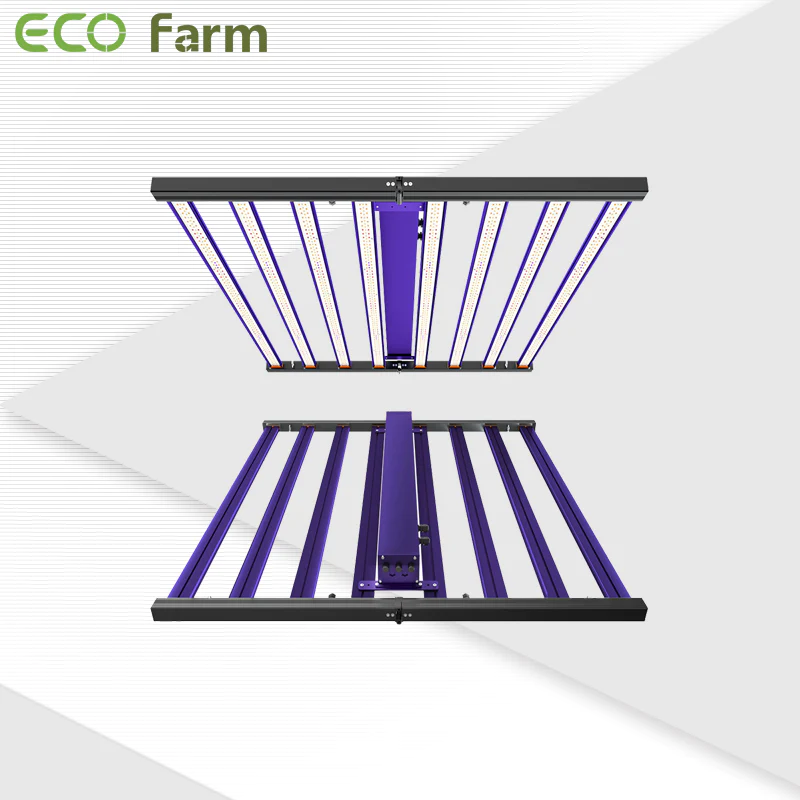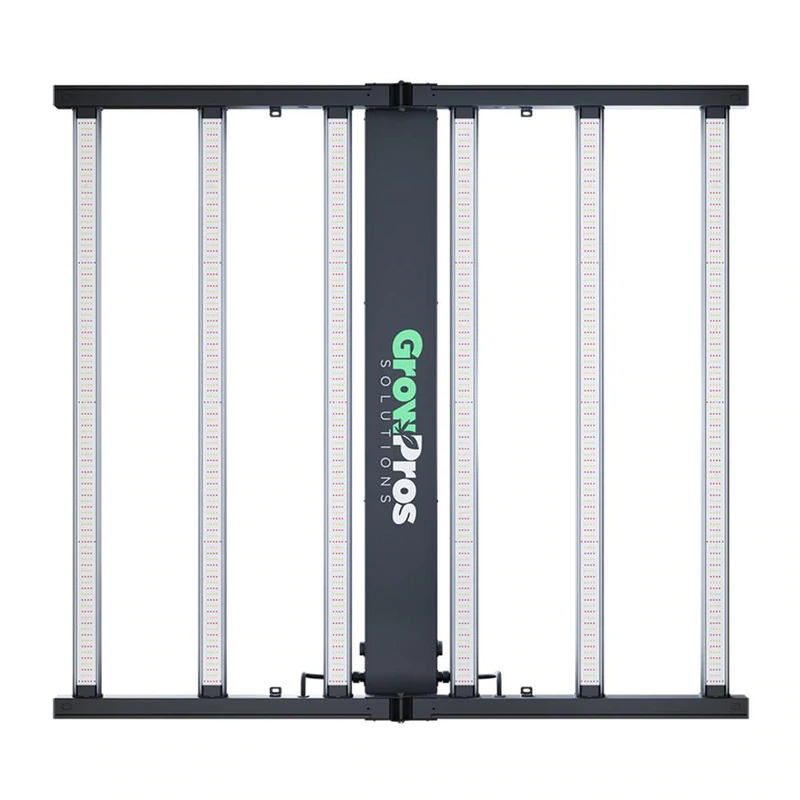2022 Best LED Grow Light: ECO Farm VS GrowPros
They say you are what you eat. And it’s true — for people and for plants!
While we humans need nutritious food, plants generate energy in a different sort of way: with light. And the best way to care for your plants is by providing them with the best LED grow lights.
That’s why this article will be diving deep into the best types of grow lights available. As the industry expands, there are more and more quality options, with some of today’s lights putting out nearly as much light as the sun — meaning happier plants, larger buds and bigger yields.
What Type Of Light Do You Need?
Here you’ll need to think about two factors:
The design of the light
The spectrum of light it provides
Design
There’s a variety of indoor grow light designs out there — panels, clamps, tripods, hanging fixtures, etc. The type of plants you have, your immediate space, and the distance you have to work with will determine which light is best for you.
Light Spectrum
Is the light you’re looking to purchase full spectrum, or does it only have red & blue diodes?
Different plants and stages of plant growth have different requirements.
ECO Farm ECO D700 700W Samsung LM281B Chip LED Grow Light

Features:
This ECO Farm LED grow light features the highest output white chips and Osram chips, with a high energy efficiency of 2.6 umol/J, PPF 1820 µmol/s, LED grow lights provide plants with powerful and high-quality light to maximize yield . The vegetable footprint is 5 x 5 feet and the flowering footprint is 4 x 4 feet. This grow light has an excellent full spectrum (3000K, 5000K, 660nm, 730nm IR, 395nm UV) and is ideal for all growth stages (germination, cloning or cuttings, mothering, vegetative and flowering applications) for higher yields . The dimming knob can adjust the light intensity at will. Designed with daisy chain function, up to 100 lights can be connected. Multi-light connections with uniform dimming are especially beneficial for large-scale indoor and commercial cultivation.

Features:
Compared to traditional HID and HPS light sources, the GrowPros LED grow light saves about 50% energy, and you can save a lot of energy over time. Without CO2 supplementation, the same results will not be produced. The HM660 lighting system is a complete pre-assembled LED grow light that reduces installation time with a variety of wiring techniques and connectors. HM660 series systems run cooler with passive cooling thermal management, meaning your lighting system can last longer while maintaining high light output levels. Longer life means you can grow crops for years without having to replace your lighting system, reducing costs. Indoor plants grow best under full-spectrum lights that replicate the sun’s natural spectrum. The HM660 series lasts longer than traditional grow light sources, resulting in healthier, happier plants.
Which features are the most important for decision making on LED grow light?
Input wattage
Input wattage is what really defines the power use of the LED growing light you are looking at, reading the fine print on the product specifications should show the actual wattage of the fixture.
You might in fact find the wattage is somewhere of a fraction of the claimed power of the unit, resulting in disappointment and resentment for LED grow lights NZ when the “3000 watts” of growing potential doesn’t add up to a good result. This has caused many sour experiences around the world and has certainly made people second guess what an LED grow lights has to offer.
The efficiency of the LED indoor grow light is really what translates that input wattage into photons for your plants, while a higher efficiency number is a good thing it certainly doesn’t mean this panel would perform better than another with a slightly lower claimed efficiency for the same wattage. Spectrum, spread and the plants you are growing are all important parts of the formula that must be compatible to achieve the best results.
Red blue and white light
You might come across a panel with what we call “blurple” LED diodes ( some call will claim this as full spectrum), simply red and blue diodes that combine to offer a migraine inducing colour scheme that your plants will generally find lacking in other parts of the spectrum resulting in lackluster plant performance. For arguments sake we can compare this against an LED offering just white light LEDs at the same wattage with a lower efficiency, (less photons for the same wattage).
You would be surprised to find the plants grow significantly better under the white light simply due to the white light containing a much broader offering of wavelengths to the plants, fulfilling its needs dramatically better. The topic of spectrum and the effects it has on different plants is still being researched and studied to this day. As more is understood of a (specific) plants requirements and preferences the LED Grow Lights will develop to suit these specific needs.
Coverage
The next thing to mention is claimed coverage, it is just as easy for a manufacturer to claim outrageous wattage as it is to claim coverage. Ideally, you want an LED Grow Light that can provide high output across your entire grow space without tapering off the intensity too much around the corners of the grow space. Taking a close look at the PPFD map is the best way to have an insight into how the LED Grow Light performs. You just need to know how much PPFD your plants require to be satisfied (too much intensity is definitely a possibility).
Most high demand plants will expect anything above 600PPF when on a short day flowering light cycle, this can be easily overlooked when the PPFD map shows claims flowering coverage reaching further out than any other LED Grow Light and yet it will have numbers as low as 100PPF anywhere that is not near the LED fixture. Claiming that it can “flower” these great distances when in reality it will struggle to do keep the plants awake on the outer edges. Assuming their testing equipment has made an accurate map in a realistic environment.
While it is certainly ideal to have an LED that reaches the four-corners of your grow room with high intensity, in reality these units can ask a pretty high investment cost that can be just too hard to justify. This is the case for many and it is worth noting that while you might have a grow space of 1.2m x 1.2m, it is best practice not to grow plants right out to edges.
When the plants start touching the walls of the Grow Room, humidity and moisture can settle in places that the airflow can no longer reach, resulting in the nasty mold starting to take a hold of your precious plants. We find it best to suggest aiming for an example of 1mx1m coverage for the LED Grow Light and putting more focus into the plants within that coverage, ensuring higher quality plant growth and performance.
Conclusion
These are exciting times for the industry. Grow lights used to be expensive, expensive to maintain and inflexible — but things have really changed! If you’re ready to grow better plants than ever, choose wisely. The grow lights you use can make all the difference.
评论
发表评论